Community Gardens & Greenspace
School Grounds Greening
Too often, the grounds around our public schools are largely hard surfaces and lack attractive outdoor spaces for student recreation, learning and interfacing with nature. That’s why the Conservancy has installed outdoor learning and play areas, and other greening features, at 57 high schools and elementary schools, and at six early childhood centers in the Pittsburgh area. These enhanced areas also offer opportunities for teachers to include hands-on nature learning experiences in their curriculum plans.
WPC’s inspiration came from author Richard Louv’s bestselling book, “Last Child in the Woods: Saving Our Children From Nature-Deficit Disorder.” This book demonstrates the critical value of time spent outdoors to children’s health, learning and social skills. Adding greenery to school grounds offers myriad benefits for students, schools and the environment:
Student benefits:
- Appreciation of nature
- Increased physical exercise
- Improved concentration and greater creativity
- Increased positive social interactions
Financial benefits:
- Energy savings
- Reduced maintenance costs
- Increased property values
Environmental benefits:
- Added habitat for birds, pollinators and other beneficial creatures
- Improved air quality
- Reduced stormwater overloads
Community benefits:
- Increased school involvement for parents
- Stronger sense of community
- Greener, healthier local environment
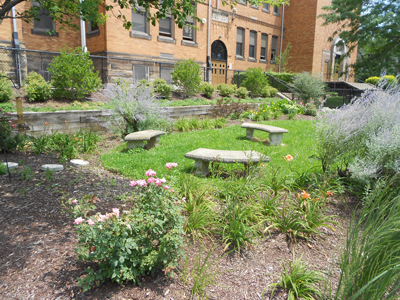
Since 2007, our school grounds greening work has supported and enhanced a variety of different learning opportunities at various schools. The following are a few of those success stories.
Pittsburgh Public Schools
The Western Pennsylvania Conservancy, the Grable Foundation and Pittsburgh Public Schools, worked to bring sustainable greenery to 57 different Pittsburgh Public High Schools and Elementary Schools. The project provided outdoor classrooms, natural play spaces and low-maintenance plantings to provide shade, landscape accents and natural points of interest for children. As part of the school grounds greening partnership, over 700 large trees and more than 9,000 shrubs and perennials were planted, many by students. In addition, the project has added 18 outdoor classrooms, six natural play spaces, five quiet reading and sitting areas, three food garden beds, a rain garden, a sensory garden and a butterfly garden.
Early Childhood Centers in Pittsburgh
Building upon the impact that the school grounds greening project had on Pittsburgh Public Schools, WPC placed emphasis on Early Childhood Centers that serve preschool-aged children in the City of Pittsburgh. Thanks to the generosity of PNC Foundation, we construct natural playspaces that can be used by centers for education and play. In many instances, ECC do not have available space for children to play and learn outside, but our school grounds greening projects have changed that at five locations throughout Pittsburgh.
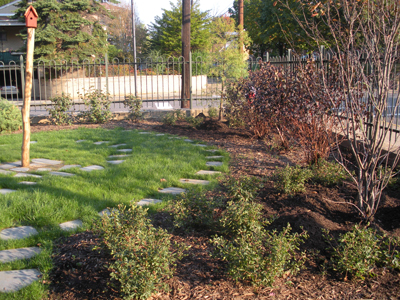
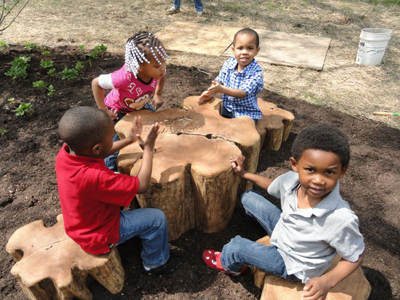
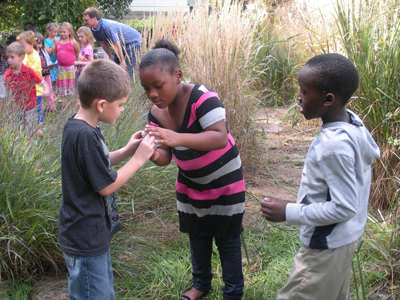
Barrett Elementary School in Homestead
Our work at Barrett Elementary in Homestead, Pa. was started from recommendations made in the Homestead green scan report. Inspiration for this project also came from the success of previous school grounds greening projects in Pittsburgh. Thanks to grants from PNC Foundation and Allegheny County Conservation District, we worked with students from Steel Valley School District to plant six ginkgo trees in front of Barrett Elementary in a specially designed tree trench, meant to capture, filter and slowly release stormwater into the drainage system.
Part of this project at Barrett Elementary included Conservancy staff working with Steel Valley High School STEM (science, technology, engineering, and mathematics) students, school leaders, local municipal officials and landscape architects to help plan and design additional green infrastructure to improve the grounds around the school. As part of the education process for this project, we took the STEM students and their teachers to Bear Run Nature Reserve and Fallingwater to study and experience how architecture, design and nature can work together.
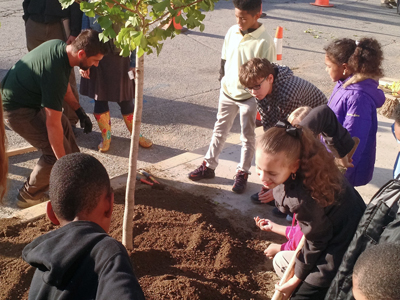
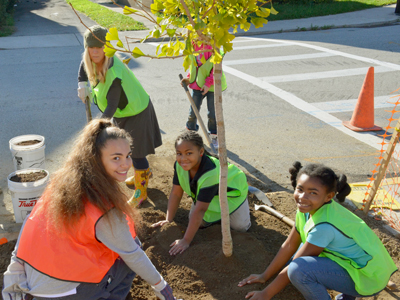
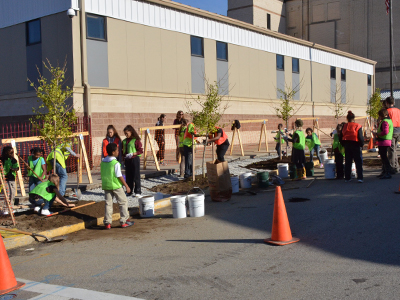
Watch a video about WPC’s work at Pittsburgh Crescent Early Childhood Center in Homewood
For More Information:
Art DeMeo
Director of Community Greenspace Services
Western Pennsylvania Conservancy
800 Waterfront Drive
Pittsburgh, PA 15222
